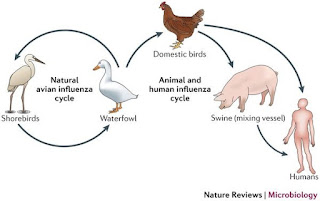Please click this link for book and author information
My favourite research for my novel-in-progress set in 1918 Calgary has been reading novels written by contemporary authors of the time. This week I finished Rilla of Ingleside, the eighth and last book of L.M. Montgomery's Anne of Green Gables series. When I was a child, I devoured all the Anne books. I loved the first three novels in the series best, but once Anne realized Gilbert was her true love she got boring and the stories shifted focus to her six children. The story of Rilla, the youngest, grabbed me more than those of her older siblings because Rilla grows as a character and the war's impact was poignant.
Rilla of Ingleside is set during World War One. The novel begins with the war's start in 1914 and ends shortly after the Armistice of November 11, 1918. Wikipedia calls Rilla of Ingleside "the only Canadian novel written from a contemporary woman's perspective about the First World War." I found it an excellent portrait of the experiences, views, and feelings of people living on the Canadian home front. The book led me to make a few changes to my novel, A Killer Whisky, which takes place during the Great War's final month.
Rilla lived in Prince Edward Island. A friend loaned me four novels written by early twentieth century Alberta writers. As their titles suggest, Cattle by Winnifred Eaton and The Cow Puncher by Robert J.C. Stead are largely set in ranch country, but the characters venture into Calgary. The Cow Puncher gets into World War One, which ties to its theme that meaning comes from service rather than selfishness. Cattle deals with the 1918 Influenza Pandemic aka the Spanish flu, which features prominently in A Killer Whisky.
The Shadow Riders by Isabel Paterson is set entirely in Calgary during the pre-war real estate boom. While reading all of the books, I kept a pen and sheet of paper handy to jot notes on descriptions of Calgary during that era, details of daily life, and word usage. A hundred years ago, expressions of surprise and horror tended to come from religion, such as "Lord Almighty!" "I'll be damned!" and the softer "Heavens!" Peppering a novel with these as well as slightly archaic phrases -- "he was wont to say," "it's a mortal disgrace," "wicked to do this" -- helps bring readers into that former time.
The fourth Alberta novel I read, The Magpie's Nest, was Isabel Paterson's second published novel. Set partly in rural Alberta and New York City, it provided less Calgary detail than The Shadow Riders, but The Magpie offered some interesting commentary. Today's writers tired of the pressure to promote themselves on social media might appreciate this Magpie character's view of fan worship: “What does anyone want to meet an author for? Or a painter, or any famous person? You’ve got all the best of them in whatever they create. I’d as soon meet a cook because I liked the meal.”
In addition to their practical value for research, I found these five novels jolly good reads. The female characters are remarkably spirited and smart. While the books' styles are somewhat dated, I enjoyed them more than many modern novels I've read. There's good reason to call them classics, but they all aren't easy to get your hands on.
Rilla of Ingleside is the only one available for takeout from my Calgary Public Library due to the continued popularity of the Anne of Green Gables series. Cattle, re-released last year by Invisible Publishing to mark the 30th anniversary of Winnifred Eaton's death, is available only for in-library use. You aren't likely to find Cattle on a bookstore shelf, but it can be ordered or purchased online. The Leopold Classical Library has republished Isabel Paterson's two novels by scanning the originals since books published in the United States before 1929 are now in the public domain. You can also read e-book versions free online.
I liked The Shadow Riders so much that I bought the republished paperback and was surprised -- "Good Heavens!" -- when it arrived in 8 1/2 x 11 format in large font with wide margins. A bargain for $30, even though the original novel probably cost about 50 cents in 1918.

.jpg)















